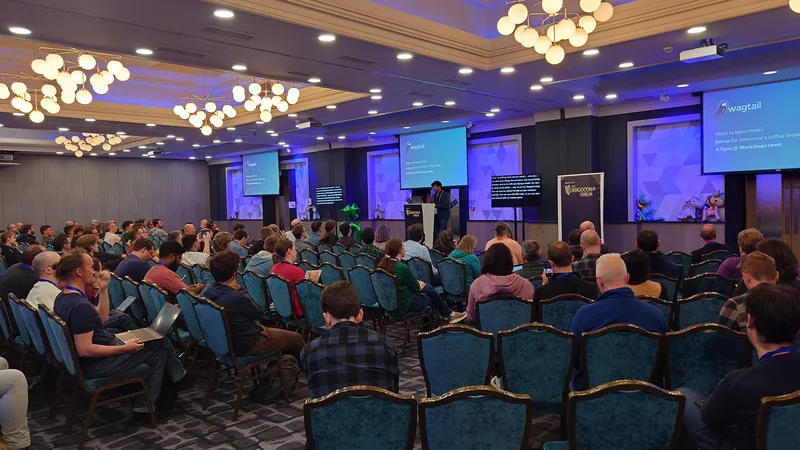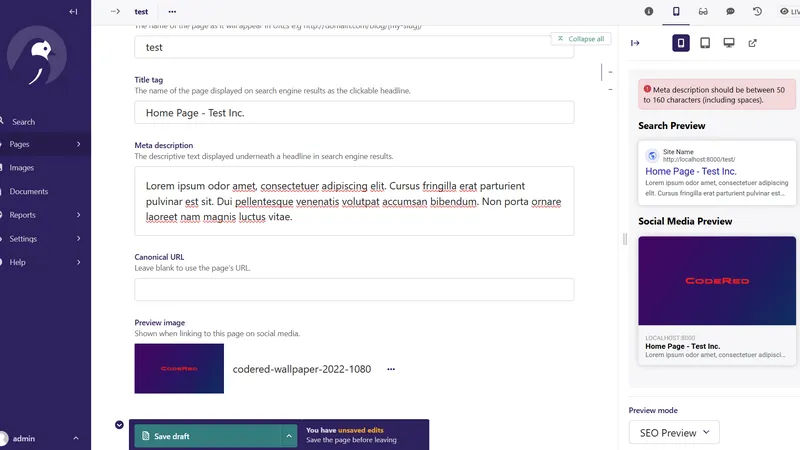The number one question I get asked is: "Why choose CodeRed CMS over WordPress?". The short answer is: CodeRed CMS requires less developer effort and yields a more stable, manageable, and higher quality website. But any salesman would tell you something similar for any product. During my years of experience working with hundreds of different websites, I have become a bit jaded and simply tired of fixing the same problems over and over and over again. And I suspect you as the reader might find yourself in a similar position - with a healthy distrust of why you might want to embrace yet another platform. I'll outline some of the tangible benefits and differences of CodeRed CMS over WordPress so that you may come to your own conclusions about what is a better fit for your needs.
Value Prop #1: Stability and manageability
WordPress: the hobbyist's platform.
WordPress is designed for blogs and hobbyist websites - it literally says so on their home page. If you need a blog, then WordPress will work perfectly out of the box; look no further. WordPress is so popular because it is a free Do-It-Yourself solution. Anyone who is willing to put in the time and research (and has enough coffee) can configure a few dozen free plugins and themes to create a bare-minimum "acceptable" version of what they want. The DIY design is both the allure and downfall of WordPress. What happens when that delicate combination of plugins and themes get updated 6 months or a year down the road? Well, for a small blog website, that really isn't a big deal. But worrying about things unexpectedly breaking on your primary business website is not acceptable. Most plugin authors do not provide any kind of support or guarantee about the quality of the software. I won't even get into secure coding standards - there are over 13,000 known vulnerabilities in WordPress themes, plugins, and WP itself as of this writing according to wpvulndb.
"Enterprise" software for million-dollar websites.
In a galaxy far far away, on the complete opposite end of the spectrum, are "enterprise" Content Management Systems. Heavyweights such as Sitecore, Kentico, LifeRay, and others are the antithesis of Do-It-Yourself. These systems require a team of developers and deep pockets for expensive licensing, hosting, and support costs. If you have a million dollar budget, then you probably DO want to employ dedicated developers and consultants to run even the smallest content change through a rigorous development/testing/security/release life-cycle.
CodeRed CMS: a step up for small businesses.
So what about everyone in between? How can a business get something more stable and secure than a do-it-yourself solution, without having to surrender full control of the content over to your developer, and without spending a fortune on licensing or manpower? Enter CodeRed CMS. We specifically made this system to serve small and medium size businesses in this niche (a rather large niche). If you want to tinker and build a website yourself without the aid of a developer, then WordPress is a better choice. But if you want to work with a developer to manage and support your website, you will get *much* better results with CodeRed CMS than WordPress can provide.
Value Prop #2: A better experience for your visitors
At the heart of it all, no matter what decisions are made within your business, or what technical underpinnings are employed on your website, the ONE important thing is that visitors have a good experience on your website. This means:
- People are able to easily find your website online (think search, social, etc.).
- Your website works quickly and cleanly to surface the information someone needs.
- Prospective customers are impressed, and complete a goal or call-to-action before leaving the site.
The folks at CodeRed are focused on business websites.
The points above may seem like content problems, not technology problems, but they do have roots in technology. Having worked with many different marketing agencies over my career, I can tell you first hand that even the best content in the world cannot outweigh poor technical execution (and vice versa). To further complicate things, if you're not tracking these metrics, how do you even know what is effective? This is something we are extremely focused on at CodeRed - we continually put enormous effort into the technical underpinnings that make websites fast, accessible, trackable, and continually up to date with Search Engine Optimization (SEO) standards. Did you know that Google will actually penalize and de-rank your site it if it is too slow or too hard to use?
WordPress is focused on blogs and news.
Back to WordPress - as I mentioned, it is inherently designed for blogs. No one person or entity is focused on optimizing all of these factors for a business marketing website. There are hundreds of different SEO WordPress plugins, but it is a vicious cycle: the more SEO plugins you add, the slower your site becomes. Simply put, WordPress is not tuned for marketing websites. That does not mean it can't be made to handle marketing sites, just that it is not built for that purpose. As a developer, and business owner, I prefer to use tools designed to do one job and do it extraordinarily well. And that leads us to...
Value Prop #3: Ease of development
As is often quoted, "do one ordinary thing extraordinarily well", or more succinctly: "you had one job...". Even the most experienced web developers inevitably spend hours and days troubleshooting undocumented low-quality WordPress plugins to make minor changes or fix bugs. Underscoring points 1 and 2 above, WordPress is not designed to be professionally managed or to be used for marketing websites. It is designed to be a DIY blog.
On the flip side, CodeRed CMS is explicitly designed to be worked on by developers. The Python/Django/Wagtail/Bootstrap stack that we have built on is some of the most popular technology in the world! Developers who enjoy their job is a major selling point. Would you rather employ a happy developer, or a disgruntled one? A CodeRed CMS code-base can be managed (in version control) and enhanced for years and years. Adding features or new interactive experiences is all low-effort and easily controlled work.
Value Prop #4: Cost, and total cost of ownership
Best of all, CodeRed CMS is completely open source and free to use. Because it is open source and based on other popular open source technologies - thousands of other developers and tech firms already possess the skills to work with CodeRed CMS. Yes, I have been told that we have a bad business model because we DON'T lock in our customers. Our customers are free to take what we build, and transfer it to a different developer.
Upfront costs of building with CodeRed CMS
Upfront developer time and labor to build a CodeRed CMS website would normally range between $1,000 and $10,000 USD. This is completely speculative. But it gives you an idea of what you are investing in. There is no licensing or recurring fees whatsoever. For reference, "enterprise" CMS implementations usually range well over $100,000 USD with yearly licensing fees ranging between $10,000 to $100,000 USD per year. Considering that CodeRed CMS provides a level of stability, security, and manageability close to "enterprise" systems, this is a MAJOR value.
For web hosting, the average CodeRed CMS site might cost between $50 to $150 USD per month to host using Heroku, Divio, AWS, Google, Azure, or of course with us at CodeRed. Sure, there aren't a plethora of bargain-basement $5/month hosting options like there are with WordPress, but there are many companies in the US and Europe who offer affordable hosting and development services for the technologies (Python) of CodeRed CMS.
Designed to be an investment for years and years
The hidden value outside of the upfront cost, is that a CodeRed CMS website is designed to be supported and evolved for years and years. The average age of WordPress sites based on my own personal experience is about 3 years max, most being completely re-built within the first year. This is based entirely on my own anecdotal experience, but it is kind of depressing to see things being re-built time after time because the system is not able to handle the changing requirements.
Summary
WordPress provides better do-it-yourself abilities at the cost of being less controlled and more prone to breakage. It is ideal for blogs or personal websites.
CodeRed CMS provides a higher level of control and stability, at the cost of requiring help from a web developer. It is ideal for business and non-profit marketing websites.
Enterprise CMSs (Sitecore, Kentico, LifeRay, etc.) provide maximum control at extremely high costs and require a dedicated team. They are ideal for massive institutional websites.

